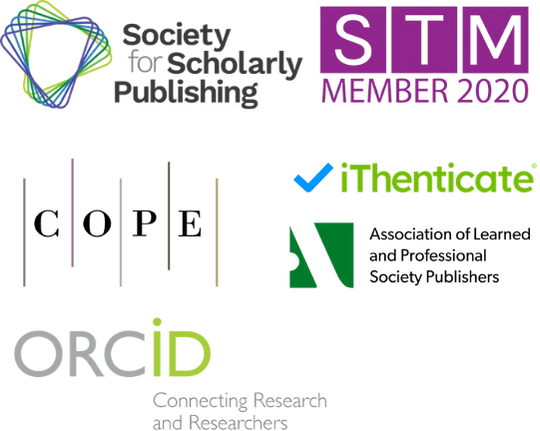Integration of Market-Oriented Development Models and Marketing Strategies in Real Estate
DOI:
https://doi.org/10.71222/gth5zb26Keywords:
market orientation, real estate development, digital marketing, BIM, data analytics, VR/AR, agile methodsAbstract
The real estate industry faces increasing challenges due to dynamic market conditions, evolving customer demands, and rapid technological advancements. This paper explores the integration of market-oriented development models with innovative digital marketing strategies to enhance competitive advantage. It analyzes core principles such as customer focus, competitor awareness, and responsiveness, alongside the adoption of digital tools like BIM, intelligent scheduling, and data analytics. The study highlights the transformative role of digital platforms, immersive VR/AR experiences, and agile development methodologies in reshaping development and marketing practices. Furthermore, it discusses emerging risks including data privacy and financial uncertainties, proposing strategic recommendations for sustainable growth. This integrated approach aims to align real estate development with contemporary market needs and technological trends, fostering resilience and efficiency.
References
1. L. Yun, “Analyzing Credit Risk Management in the Digital Age: Challenges and Solutions,” Econ. Manag. Innov., vol. 2, no. 2, pp. 81–92, Apr. 2025, doi: 10.71222/ps8sw070.
2. G. A. Wilson, G. Millard, and C. Hills, “An international examination of market orientation and performance in residential property management,” Prop. Manag., vol. 41, no. 5, pp. 618–628, 2023, doi: 10.1108/PM-10-2022-0082.
3. S. Jing, “Practice of digital construction to improve construction project progress management,” Acad. J. Eng. Technol. Sci., vol. 8, no. 2, pp. 36–44, 2025, doi: 10.25236/AJETS.2025.080205.
4. I. G. A. K. Giantari and I. P. G. Sukaatmadja, “Effects of environmental orientation, green marketing mix and social capital on the competitive advantage of real estate developers in Bali,” Prop. Manag., vol. 39, no. 2, pp. 193–209, 2021, doi: 10.1108/PM-01-2020-0005.
5. L. Jiang, et al., “Measuring the impact of government intervention on the spatial variation of market-oriented urban rede-velopment activities in Shenzhen, China,” Cities, vol. 147, 104834, 2024, doi: 10.1016/j.cities.2024.104834.
6. X. Luo, “Reshaping coordination efficiency in the textile supply chain through intelligent scheduling technologies,” Econ. Manag. Innov., vol. 2, no. 4, pp. 1–9, Jul. 2025, doi: 10.71222/ww35bp29.
7. N. Alqahtani, C. Uslay, and S. Yeniyurt, “Comparing the moderated impact of entrepreneurial orientation, market orienta-tion, and entrepreneurial marketing on firm performance,” J. Small Bus. Manag., vol. 62, no. 6, pp. 2741–2778, 2024, doi: 10.1080/00472778.2023.2272267.
8. N. M. Ngoc and N. H. Tien, “Branding strategy for gamuda land real estate developer in ho chi minh city vietnam. celadon city project,” Psychol. Educ., vol. 58, no. 5, pp. 3308–3316, 2021.
9. A. S. A. Maaodhah, et al., “The impact of market orientation and entrepreneurial orientation on firm performance of wholesale and retailer SMEs in Malaysia,” Int. J. Acad. Res. Bus. Soc. Sci., vol. 11, no. 6, pp. 729–743, 2021, doi: 10.6007/IJARBSS/v11-i6/10019.
10. F. Gao, “The Role of Data Analytics in Enhancing Digital Platform User Engagement and Retention,” J. Media J. Commun. Stud., vol. 1, no. 1, pp. 10–17, Apr. 2025, doi: 10.71222/z27xzp64.
11. R. B. Mathafena and J. Msimango-Galawe, “Entrepreneurial orientation, market orientation and opportunity exploitation in driving business performance: moderating effect of interfunctional coordination,” J. Entrep. Emerg. Econ., vol. 15, no. 3, pp. 538–565, 2023, doi: 10.1108/JEEE-03-2021-0114.
12. B. Wang, “The evolving real estate market structure in China,” in Understanding China’s Real Estate Markets: Development, Finance, and Investment, Cham: Springer Int. Publ., 2021, pp. 9–19, doi: 10.1007/978-3-030-71748-3_2.
13. P. M. Hiep, et al., “Enhancing social responsibility and sustainability in real estate industry,” Turk. J. Comput. Math. Educ., vol. 12, no. 14, pp. 4999–5013, 2021.
14. T. T. H. Bui, et al., “RETRACTED ARTICLE: Impact of COVID-19 pandemic on franchise performance from franchisee perspectives: the role of entrepreneurial orientation, market orientation and franchisor support,” J. Sustain. Finance Invest., vol. 13, no. 1, pp. 264–282, 2023, doi: 10.1080/20430795.2021.1891787.
15. S. Yang, “The Impact of Continuous Integration and Continuous Delivery on Software Development Efficiency,” J. Comput. Signal Syst. Res., vol. 2, no. 3, pp. 59–68, Apr. 10.71222/pzvfqm21.
16. X. Luo, “Immersive digital modeling and interactive manufacturing systems in the textile industry,” J. Comput. Signal Syst. Res., vol. 2, no. 5, pp. 31–40, 2025, doi: 10.71222/jyctft16.
Downloads
Published
Issue
Section
License
Copyright (c) 2025 Wei Sun (Author)

This work is licensed under a Creative Commons Attribution 4.0 International License.


